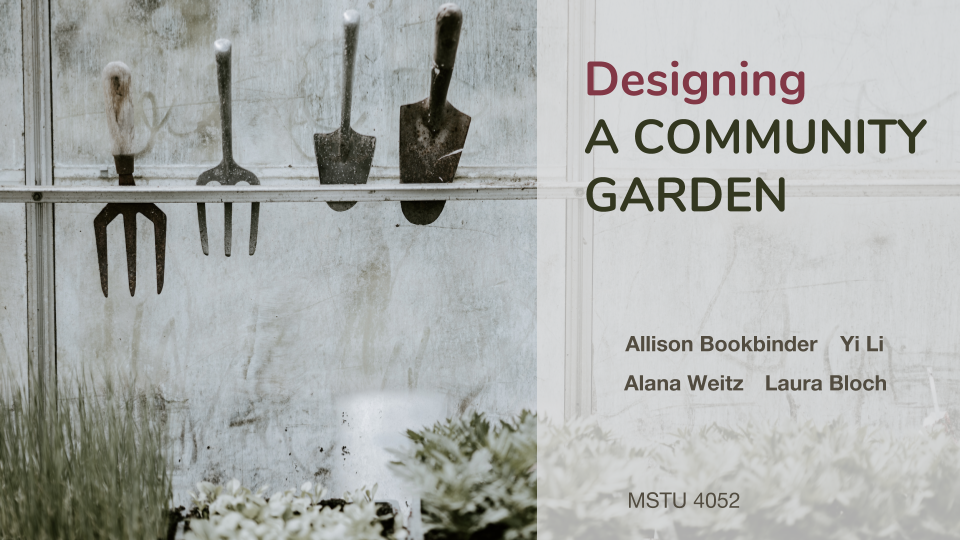Designing a Community Garden
About
This science curriculum plan ties together math, science, and the humanities by leading students through the process of designing a community garden. Students are taught to make decisions that balance the needs of their community with individual needs and various constraints, which necessitates a way of thinking that will be transferable to other contexts.
Goal
The goal of this project was to create a 9th-grade science project centered around a “generative topic” (Wiske & Breit, 2010). Generative topics inherently elicit extended inquiry within students and provide skills and understanding that are easily transferrable to many contexts.
Implementation
Utilizing the process of backwards design, my team of four began by selecting an understanding goal for our students. Our understanding goal was for students to be able to balance various needs and constraints in order to make a decision. From this understanding goal, we then developed specific problems that we would like our students to solve, such as “what data should I collect to understand my community needs and resources?”, and then designed performances of understanding around those specific problems. In designing the use of technology in our curriculum, we focused on how technology could enhance the learning experience, rather than simply facilitate it. By using Google Forms and Sheets, students would be able to not only collaborate and see each others’ contributions in real-time, but also manipulate data to see how it affected formulaic results. Through the use of Sketchup, students could model their designs and more readily visualize their feasibility given spatial and financial constraints.
Results
The resulting product is a semester-long lesson plan with two performances of understanding, assessment rubrics, and guides for creating a reflective, collaborative community within the classroom.
We iterated on our initial design to refine and enhance the final lesson plan. We found that our initial design was too focused on the project itself rather than the understanding goal. By working backwards from our understanding goal, we were able to adapt our initial performances of understanding from disjointed, unfocused performances to ones that were more cohesive and goal-oriented.
